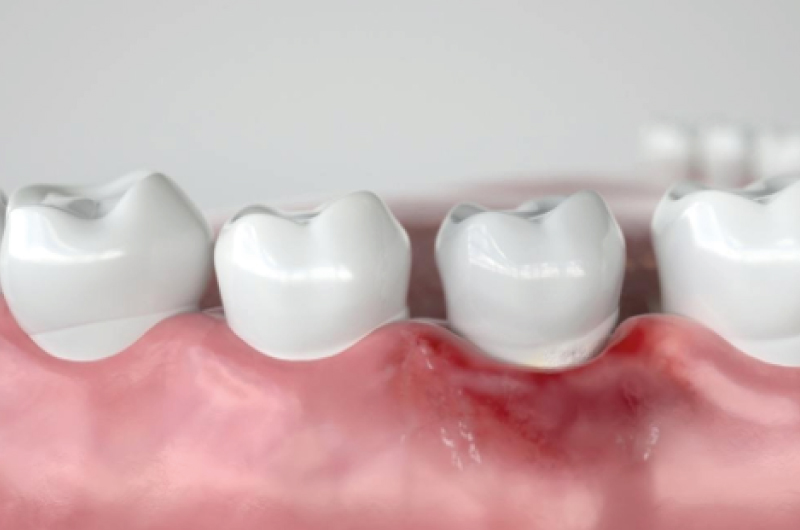Oral Surgery Services
Oral Surgery Services (Periodontal Disease)

Periodontal disease, commonly known as gum inflammation, is a condition where disease-causing plaque adheres to the tooth surface, eventually transforming into calculus deposits. As calculus deposits accumulate, it becomes a breeding ground for disease-causing bacteria. When calculus and bacteria accumulate more and persist for a longer time, it increases in depth under the gumline. This leads to inflammation spreading to all supporting structures of the teeth, resulting in the destruction of the periodontal tissues.
Signs of periodontal disease include:
- Bleeding from the gums while brushing teeth.
- Swollen and red gums.
- Bad breath.
- Gum recession.
- Pus may discharge from the gum crevices.
- loose tooth
Can periodontal treatment be cured? How long does treatment take?
In cases where there is significant loss of tooth structure, direct restoration with fillings may be challenging. This is because reconstructing the missing tooth structure to match the natural appearance can sometimes be difficult. Moreover, if it involves areas subjected to substantial chewing forces, there might be an increased risk of fracture.
- The stages and severity of periodontal disease.
- Take care of the cleanliness of teeth, gums, and oral cavities as instructed by the dentist.
- Strictly follow the dentist’s appointments, starting with monthly appointments for six consecutive months, followed by every two months, and gradually extending to every three months until the disease is under control.
- However, even after treating symptoms at each stage, patients must continue to protect themselves to prevent the causes of the disease from recurring.
Oral Surgery
Gum Tissue Graft, also known as Gum Grafting, is a surgical procedure to transplant tissue to the tooth roots that have been affected by gum recession. The procedure involves taking tissue from the surrounding areas of the teeth. If there is insufficient tissue, it may be sourced from the palate. This transplanted tissue is then stitched onto the gum area covering the tooth roots, enhancing the fullness of the gum tissue. This helps to protect the tooth roots from potential infection.
A Gummy Smile, or excessive display of gum tissue, occurs when the gums appear large, or the teeth are too short. A beautiful smile is influenced by various factors, not only the proper positioning of the teeth but also the alignment of the upper and lower jaws, which need to be in suitable positions. Additionally, the functioning of the perioral muscles around the mouth plays a crucial role.
Contact us at Poonnakan Dental Clinic,
Dentist Consultation.



